Zhesong Yu
SLIT: Boosting Audio-Text Pre-Training via Multi-Stage Learning and Instruction Tuning
Feb 20, 2024Abstract:Audio-text pre-training (ATP) has witnessed remarkable strides across a variety of downstream tasks. Yet, most existing pretrained audio models only specialize in either discriminative tasks or generative tasks. In this study, we develop SLIT, a novel ATP framework which transfers flexibly to both audio-text understanding and generation tasks, bootstrapping audio-text pre-training from frozen pretrained audio encoders and large language models. To bridge the modality gap during pre-training, we leverage Q-Former, which undergoes a multi-stage pre-training process. The first stage enhances audio-text representation learning from a frozen audio encoder, while the second stage boosts audio-to-text generative learning with a frozen language model. Furthermore, we introduce an ATP instruction tuning strategy, which enables flexible and informative feature extraction tailered to the given instructions for different tasks. Experiments show that SLIT achieves superior performances on a variety of audio-text understanding and generation tasks, and even demonstrates strong generalization capabilities when directly applied to zero-shot scenarios.
Joint Music and Language Attention Models for Zero-shot Music Tagging
Oct 16, 2023



Abstract:Music tagging is a task to predict the tags of music recordings. However, previous music tagging research primarily focuses on close-set music tagging tasks which can not be generalized to new tags. In this work, we propose a zero-shot music tagging system modeled by a joint music and language attention (JMLA) model to address the open-set music tagging problem. The JMLA model consists of an audio encoder modeled by a pretrained masked autoencoder and a decoder modeled by a Falcon7B. We introduce preceiver resampler to convert arbitrary length audio into fixed length embeddings. We introduce dense attention connections between encoder and decoder layers to improve the information flow between the encoder and decoder layers. We collect a large-scale music and description dataset from the internet. We propose to use ChatGPT to convert the raw descriptions into formalized and diverse descriptions to train the JMLA models. Our proposed JMLA system achieves a zero-shot audio tagging accuracy of $ 64.82\% $ on the GTZAN dataset, outperforming previous zero-shot systems and achieves comparable results to previous systems on the FMA and the MagnaTagATune datasets.
Attention-based cross-modal fusion for audio-visual voice activity detection in musical video streams
Jun 21, 2021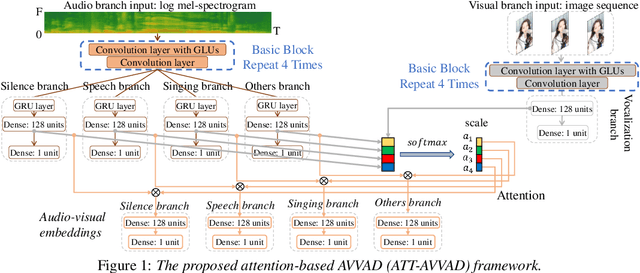
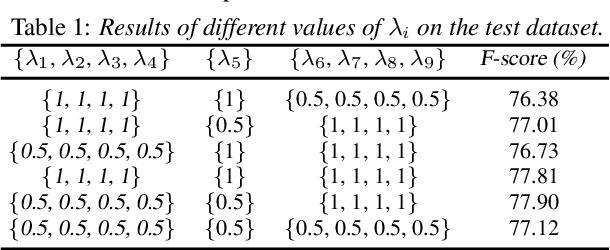
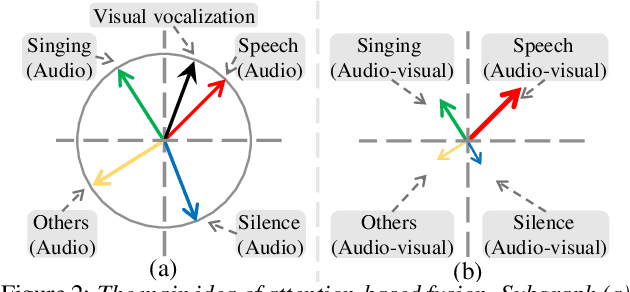

Abstract:Many previous audio-visual voice-related works focus on speech, ignoring the singing voice in the growing number of musical video streams on the Internet. For processing diverse musical video data, voice activity detection is a necessary step. This paper attempts to detect the speech and singing voices of target performers in musical video streams using audiovisual information. To integrate information of audio and visual modalities, a multi-branch network is proposed to learn audio and image representations, and the representations are fused by attention based on semantic similarity to shape the acoustic representations through the probability of anchor vocalization. Experiments show the proposed audio-visual multi-branch network far outperforms the audio-only model in challenging acoustic environments, indicating the cross-modal information fusion based on semantic correlation is sensible and successful.
ByteCover: Cover Song Identification via Multi-Loss Training
Oct 27, 2020
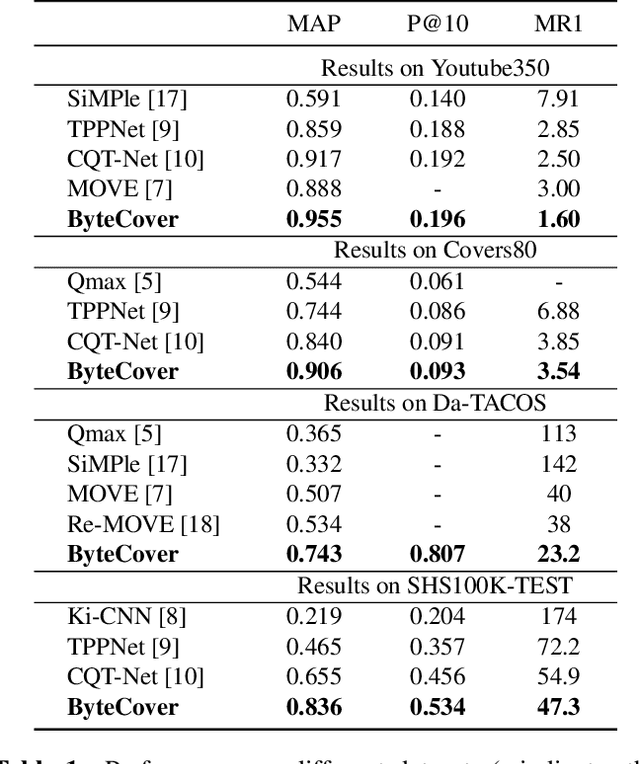
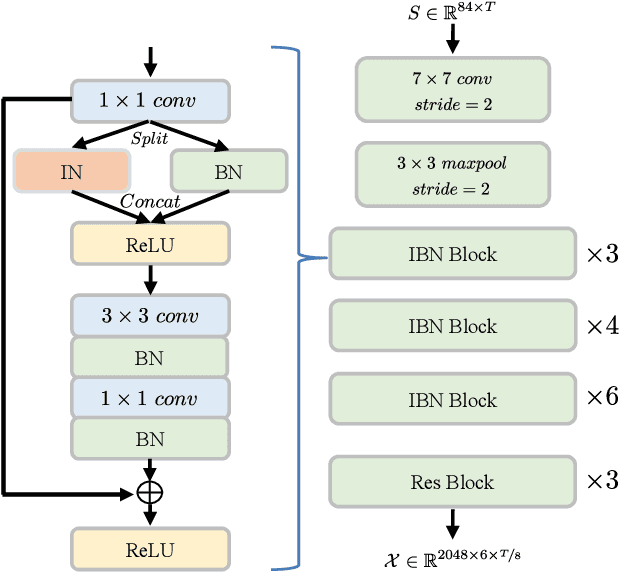

Abstract:We present in this paper ByteCover, which is a new feature learning method for cover song identification (CSI). ByteCover is built based on the classical ResNet model, and two major improvements are designed to further enhance the capability of the model for CSI. In the first improvement, we introduce the integration of instance normalization (IN) and batch normalization (BN) to build IBN blocks, which are major components of our ResNet-IBN model. With the help of the IBN blocks, our CSI model can learn features that are invariant to the changes of musical attributes such as key, tempo, timbre and genre, while preserving the version information. In the second improvement, we employ the BNNeck method to allow a multi-loss training and encourage our method to jointly optimize a classification loss and a triplet loss, and by this means, the inter-class discrimination and intra-class compactness of cover songs, can be ensured at the same time. A set of experiments demonstrated the effectiveness and efficiency of ByteCover on multiple datasets, and in the Da-TACOS dataset, ByteCover outperformed the best competitive system by 20.9\%.
Contrastive Unsupervised Learning for Audio Fingerprinting
Oct 26, 2020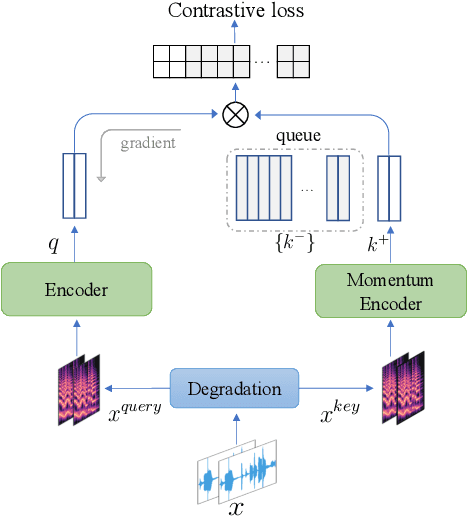
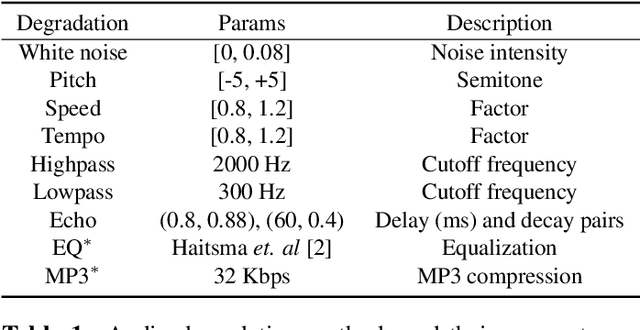
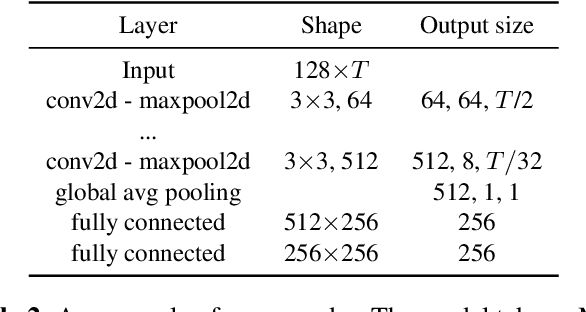
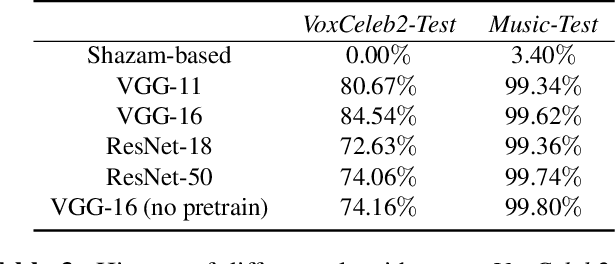
Abstract:The rise of video-sharing platforms has attracted more and more people to shoot videos and upload them to the Internet. These videos mostly contain a carefully-edited background audio track, where serious speech change, pitch shifting and various types of audio effects may involve, and existing audio identification systems may fail to recognize the audio. To solve this problem, in this paper, we introduce the idea of contrastive learning to the task of audio fingerprinting (AFP). Contrastive learning is an unsupervised approach to learn representations that can effectively group similar samples and discriminate dissimilar ones. In our work, we consider an audio track and its differently distorted versions as similar while considering different audio tracks as dissimilar. Based on the momentum contrast (MoCo) framework, we devise a contrastive learning method for AFP, which can generate fingerprints that are both discriminative and robust. A set of experiments showed that our AFP method is effective for audio identification, with robustness to serious audio distortions, including the challenging speed change and pitch shifting.
Learning a Representation for Cover Song Identification Using Convolutional Neural Network
Nov 01, 2019
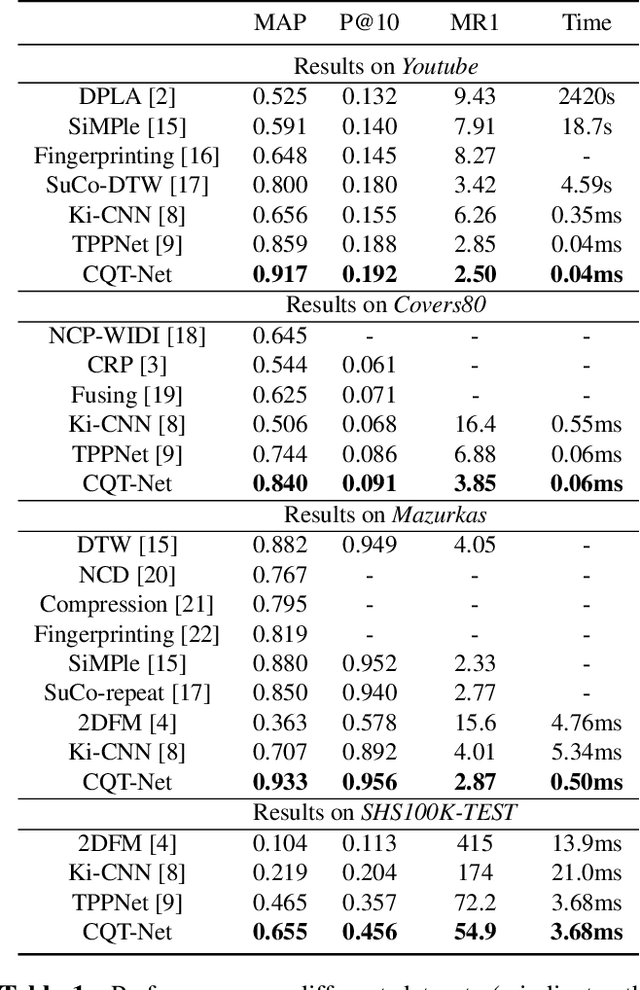
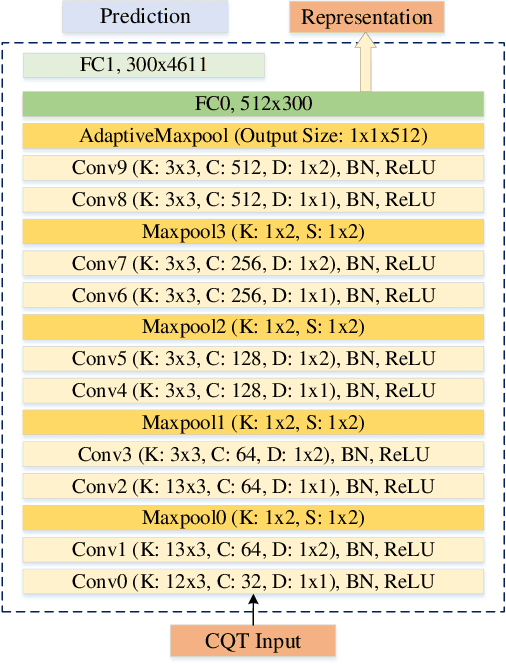
Abstract:Cover song identification represents a challenging task in the field of Music Information Retrieval (MIR) due to complex musical variations between query tracks and cover versions. Previous works typically utilize hand-crafted features and alignment algorithms for the task. More recently, further breakthroughs are achieved employing neural network approaches. In this paper, we propose a novel Convolutional Neural Network (CNN) architecture based on the characteristics of the cover song task. We first train the network through classification strategies; the network is then used to extract music representation for cover song identification. A scheme is designed to train robust models against tempo changes. Experimental results show that our approach outperforms state-of-the-art methods on all public datasets, improving the performance especially on the large dataset.
 Add to Chrome
Add to Chrome Add to Firefox
Add to Firefox Add to Edge
Add to Edge